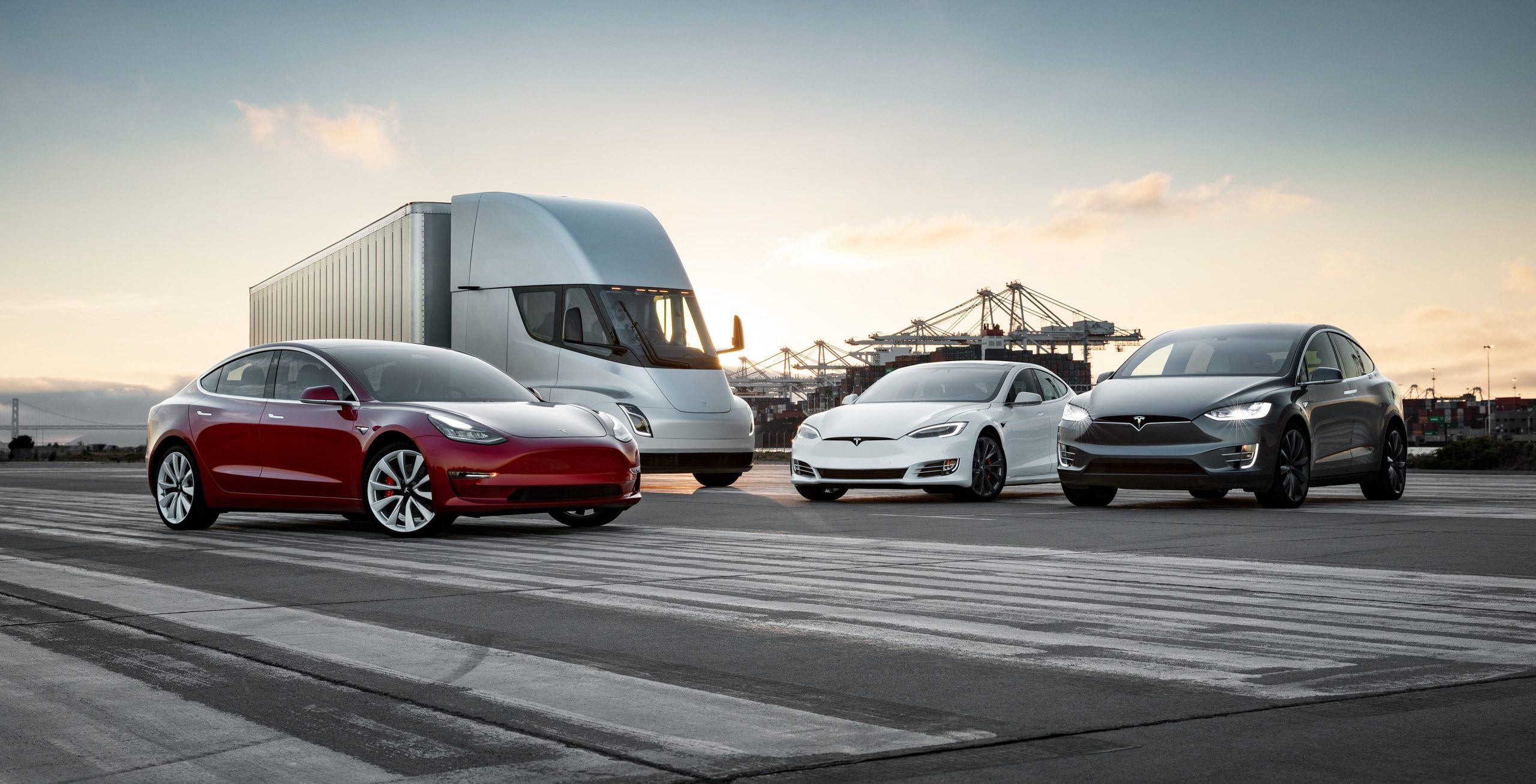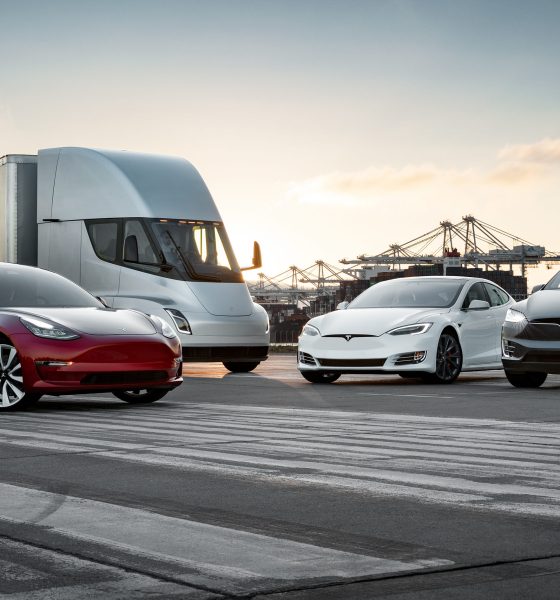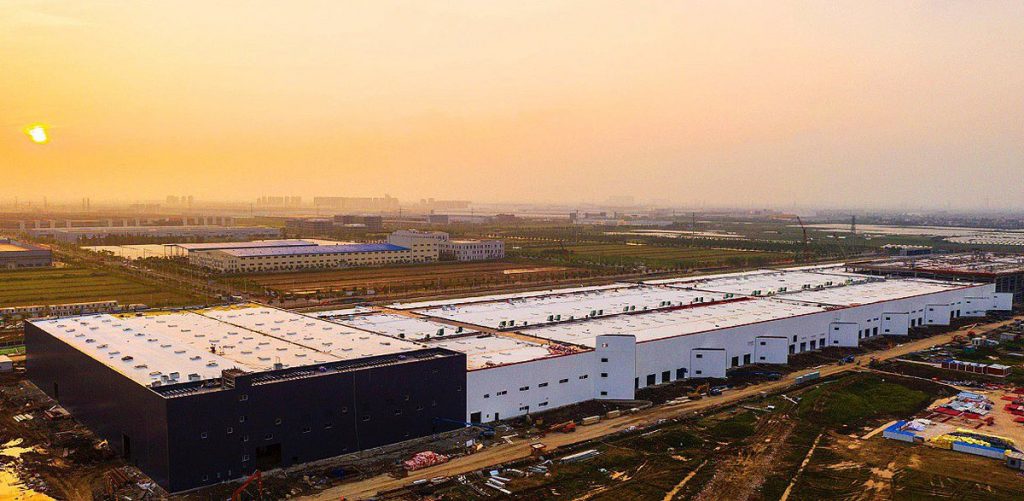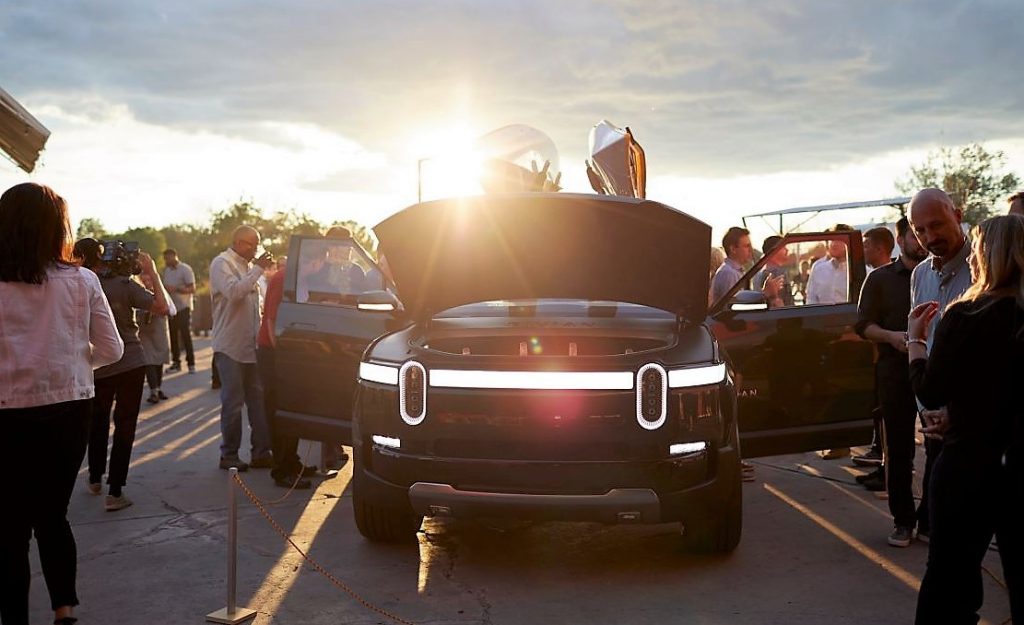

News
Tesla Effect: Expert dives into EV adoption and the internal combustion engine’s death
When Elon Musk took the helm as CEO of Tesla, he aimed to disrupt the transportation industry to such a degree that electric mobility becomes the preferred, primary form of transportation. It was a lofty goal, near-impossible at the time. Yet, more than a decade and several all-electric vehicles later, Musk’s dream and his all-too-familiar Master Plan are actually happening.
Spurred by the success and the demand generated by vehicles like the Tesla Model S and Model 3, the auto industry is shifting towards electric transportation. Coupled with the ongoing climate emergency, several regions across the globe are also looking to drastically reduce their emissions, and one of the ways they are doing that is by phasing out the internal combustion engine. Paul Eichenberg, managing director of Paul Eichenberg Strategic Consulting and a longtime veteran in the auto industry, discussed these shifts in a recent appearance at Autoline After Hours.
During his discussions, Eichenberg noted that the auto industry, including the companies comprising its large supply chain, is already undergoing a steady departure from ICE technology. Aggressive emissions targets in regions such as Europe and China will eventually make it impossible for gas and diesel-powered vehicles to comply unless they become electric. Technological advancements such as autonomous driving solutions are also becoming a priority. This could be seen in how massive companies such as Volkswagen and Ford are currently partnering in a push towards EVs and full self-driving technology. Eichenberg noted that there would likely be more high-profile collaborations in the near future.

It is at this point that Tesla’s disruption, the “Tesla Effect,” if you may, becomes incredibly evident. Tesla might still be learning the ropes when it comes to running a car business, but it is becoming undeniable that the company has created an objectively superior product. Sandy Munro, who has torn down the Tesla Model 3 and other EVs like the Chevy Bolt and the BMW i3, remarked that Tesla’s electric sedan is at least a generation ahead of what other companies have put on the road in terms of the architecture, the electronic systems, and the software surrounding the vehicle. Tesla still needs to figure out a consistent way to make money, but in terms of the electric cars themselves, the company seems to have everything figured out.
With traditional auto catching up to upstart companies like Tesla, large carmakers are now looking to leverage the innovations from younger, smaller companies. This could be seen in how Ford willingly invested in Rivian, which has developed its own skateboard platform that features much of the same concepts as Tesla’s skateboard chassis. Eichenberg, citing an OEM he spoke with prior to the announcement of Ford’s Rivian investment, stated that building a skateboard similar to Rivian’s and Tesla’s will likely result in a seven-year lead in the marketplace.
With electric cars being far more straightforward in terms of parts and components, a significant number of companies whose businesses rely on the internal combustion engine are currently being faced with a dilemma. Eichenberg gave an example of this in a brief discussion about forgings. “If you look at the forgings, a typical vehicle like the Pacifica — you know, V6, 8-speed — that has 107 forgings in it, in just that traditional ICE engine ecosystem. When you go to an electric vehicle, whether it’s the (BMW) i3, the Teslas, the (Chevy) Bolt, whatever it is, there’s eight or nine. So you have a 90% over-capacitation of an industry. And here’s an industry that’s only 90 billion globally, and half of everything it does is in the engine-transmission ecosystem,” he said.

Elaborating further, Eichenberg mentioned that big-tier corporations such as Honeywell and Delphi, whose businesses are tied to the internal combustion engine, are now positioning themselves through spinoffs as a way to shed their ICE-centered assets. Unfortunately, smaller companies don’t have it as easy, particularly as private equities and investors do not seem interested in ICE innovations anymore. Eichenberg shared the story of Dayco, a private equity-owned business which experienced multiple failed sale processes. Eventually, the company ended up taking the deal to China, where it failed to receive a single bid. Among the key reasons behind these failures was Dayco’s line of business.
“Why is Dayco an indication of what private equities are going to do? It’s because Dayco makes pulley systems that go in front of the internal combustion engine. And of course, what’s been the first element to be electrified? All the pumps and all these systems that run off this pulley system. So, the market has already recognized, ‘Hey you know what, we’re not interested in these types of assets,’” he said.
Overall, it appears that traditional automakers’ decision to “wait and see” if Tesla survives and succeeds was a miscalculation at best. As it turned out, well-designed, long-range electric cars caught on, and with the advent of the Tesla Model 3 Standard Plus, which currently starts below $40,000 with Autopilot as standard, it is now becoming quite evident just how much catching up is needed for traditional auto to thrive (or even survive) in the age of the electric car. Yet, as more large automakers collaborate on technology that companies like Tesla have developed on their own, and as investments flow into young, innovative companies like Rivian, it is becoming a certainty that the internal combustion engine is indeed on its twilight years.
Watch Paul Eichenberg’s segment in Autoline After Hours in the video below.

Elon Musk
Elon Musk’s Biggest Revelations on AI, Robots, and the Future of Work from the Moonshots Podcast

Elon Musk’s appearance on the Moonshots with Peter Diamandis podcast was packed with bold predictions, candid admissions, and surprising tech insights. The nearly three-hour conversation covered everything from artificial intelligence to humanoid robots, geopolitics, and the future of work. Here are the top 10 most intriguing takeaways:
-
Aggressive AGI Timeline Predictions
Musk offered a detailed view on when artificial general intelligence (AGI) could emerge, suggesting it may arrive sooner than many expect, emphasizing both transformative potential and risks.
-
U.S. vs. China in the AI Race
He discussed the strategic competition between the United States and China over AI development, noting that geopolitical dynamics will shape how and who leads in the next decades.
-
Future of Job Markets
Musk touched on how AI and automation could reshape employment, predicting massive boosts in productivity alongside potential disruptions in traditional work structures.
-
Clean Energy Transition
A recurring theme was the role of clean energy in future economies, with Musk reiterating the importance of scaling sustainable power generation and storage.
-
Humanoid Robots Are Coming
On the podcast, Musk elaborated on Tesla’s work on humanoid robots, hinting at timelines and applications that go beyond factories to general-purpose assistance.
-
Tesla Roadster “Last Human-Driven Car”
Outside the core discussion topics, Musk teased features of the upcoming Tesla Roadster — calling it “the best of the last of the human-driven cars” and suggesting safety won’t be its main selling point.
-
The Role of AI in Clean Energy and Robotics
Linking AI to both energy optimization and robotics, Musk explained how smarter systems could accelerate decarbonization and task automation across industries.
-
U.S. Innovation Leadership
Musk argued that maintaining American leadership in key tech sectors like AI, space, and robotics should be a national priority, with thoughtful policy and investment.
-
Job Creation vs. Job Elimination
While acknowledging automation’s disruptive effects, he also outlined scenarios where new industries and opportunities could emerge, particularly in AI, space, and advanced manufacturing.
-
Long-Term Vision for Humanity
Throughout the conversation, Musk revisited his long-term philosophical views — including a belief in humanity’s responsibility to become a multi-planetary and technologically empowered species.
Whether you agree with Musk’s optimism or not, the podcast offers a window into the thinking of one of the most influential figures in tech today, in and why his visions continue to spark debate and inspiration.
Elon Musk
Elon Musk just said some crazy stuff about the Tesla Roadster

Elon Musk appeared on the Moonshots podcast with Peter Diamandis today to discuss AGI, U.S. vs. China, Tesla, and some other interesting topics, but there was some discussion about the upcoming unveiling of the Roadster, the company’s electric supercar that will arrive several years after it was initially slated for release.
Musk made some pretty amazing claims about the Roadster; we already know it is supposed to be lightning-fast and could even hover, if Tesla gets everything to happen the way it wants to. However, the car has some pretty crazy capabilities, some of which have not even been revealed.
On the podcast, Musk said:
“This is not a…safety is not the main goal. If you buy a Ferrari, safety is not the number one goal. I say, if safety is your number one goal, do not buy the Roadster…We’ll aspire not to kill anyone in this car. It’ll be the best of the last of the human-driven cars. The best of the last.”
🚨 Elon on the Roadster unveiling, scheduled for April 1:
— TESLARATI (@Teslarati) January 6, 2026
Musk makes a good point: people who buy expensive sports cars with ridiculous top speeds and acceleration rates do not buy them to be safe. They hope they are safe in case of an emergency or crash, but safety is not at the forefront of their thoughts, because nobody buys a car thinking they’ll crash it.
The Roadster is truly going to push the limits and capabilities of passenger vehicles; there’s no doubt about that. Tesla plans to show off the new version car for the first time on April 1, and Musk has only hinted at what is possible with it.
Musk said back in November:
“Whether it’s good or bad, it will be unforgettable. My friend Peter Thiel once reflected that the future was supposed to have flying cars, but we don’t have flying cars. I think if Peter wants a flying car, he should be able to buy one…I think it has a shot at being the most memorable product unveiling ever. [It will be unveiled] hopefully before the end of the year. You know, we need to make sure that it works. This is some crazy technology in this car. Let’s just put it this way: if you took all the James Bond cars and combined them, it’s crazier than that.”
Production is set to begin between 12 and 18 months after the unveiling, which would put the car out sometime in 2027. Hopefully, Tesla is able to stay on track with the scheduling of the Roadster; many people have been waiting a long time for it.
News
Tesla launches hiring for Robotaxi program in its twentieth country
Overall, the hiring signals Tesla’s aggressive timeline for global dominance in autonomous mobility.

Tesla has launched a hiring initiative for its Robotaxi program in its twentieth country, as the company posted two new jobs in Thailand this week.
Tesla is hiring in Bangkok and Kowloon for the Vehicle Operator position, which is related to data collection, and is the first in Thailand, but the twentieth country overall, as the company tries to expand into other markets.
🚨 BREAKING: Tesla is hiring additional full-time Vehicle Operators in Bangkok, Thailand.
Previous openings were 6-month, part-time roles. These are equivalent to AI Safety Operator roles in the U.S. pic.twitter.com/R6LzoU1bos— Tesla Yoda (@teslayoda) January 5, 2026
Tesla has had active job postings for Vehicle Operator positions in the United States, India, Israel, Taiwan, Germany, the Czech Republic, Hungary, the UK, Finland, Switzerland, Sweden, the Netherlands, Austria, Spain, Norway, Italy, and Turkey in past listings.
These postings are not all currently available, likely because the roles have been filled.
Thailand is the most recent, and broadens the company’s potential path to expanding its ride-hailing program, which is only active in the United States in Austin, Texas, and the California Bay Area, so far.
These roles typically involve data collection, which assists in improving Autopilot and Full Self-Driving operation. Tesla’s self-driving programs utilize real-world data that is accumulated and stored, observing vehicle and traffic behavior, as well as tendencies that are performed by human drivers to help increase safety and overall performance.
Overall, the hiring signals Tesla’s aggressive timeline for global dominance in autonomous mobility. Although the company has several high-profile rivals and competitors in the field, it has established itself as a main player and a leader in the development of autonomous technology, especially in the U.S., as its FSD suite is refined on almost a weekly basis.
The Full Self-Driving suite is available in seven countries and territories currently, including the U.S., Canada, China, Mexico, Puerto Rico, Australia, and New Zealand. Its biggest goal for expansion is currently the European market, where regulatory hurdles have been the main bottleneck prolonging its launch on the continent.
Tesla has performed months of testing in various European countries, including France and Spain, and does have support in some areas from various regulatory agencies. However, the company is hoping to get through this red tape and offer its suite in Europe for the first time, hopefully this year.








